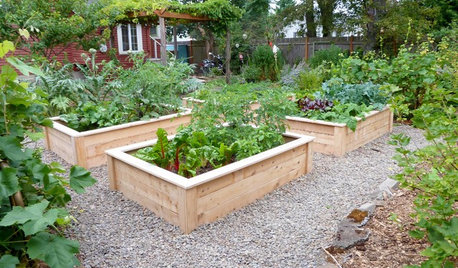Re-seeding a new lawn. Help!
chitra0828
9 years ago
Related Stories

GARDENING GUIDESHow to Plant a New Lawn From Seed
Choose from more grass varieties and save money over sod by starting your lawn from seed
Full Story
GARDENING GUIDES8 Unthirsty Plants Help You Save Water in Style
Spend less effort and money on your landscape with drought-tolerant and native plants that liven up your yard
Full Story
GARDENING GUIDESHow to Prep Your Ground for a Healthy New Lawn
Seed or sod that falls on weedy, lumpy soil is a wasted effort. Follow these steps to ensure that your new lawn will thrive
Full Story
SAVING WATERHouzz Call: Are You Letting Go of Your Lawn?
Many facing a drought are swapping turf for less thirsty plantings. If you’re one of them, we’d like to hear about it
Full Story
GARDENING GUIDESHow to Plant a New Lawn From Sod
Take the quick-start route to turf with sod; these installation guidelines will help ensure a healthy and long-lasting lawn
Full Story
EARTH DAYThe Case for Losing the Traditional Lawn
Work less, help the environment and foster connections by just saying no to typical turf
Full Story
GARDENING GUIDESSeeds or Seedlings? How to Get Your Garden Started
Growing delicious herbs and vegetables starts with knowing your goals and when you want to plant
Full Story
GARDENING GUIDES12 Tips to Help You Start an Edible Garden
Get on your way to growing your own vegetables with a raised bed or a few containers on the patio
Full Story









yardtractor1
chitra0828Original Author
Related Professionals
Holly Springs Landscape Architects & Landscape Designers · West Milford Landscape Architects & Landscape Designers · Tempe Landscape Architects & Landscape Designers · Alamo Landscape Contractors · Cincinnati Landscape Contractors · Clayton Landscape Contractors · College Park Landscape Contractors · Cordele Landscape Contractors · Dudley Landscape Contractors · Elkridge Landscape Contractors · North Chicago Landscape Contractors · Oak Harbor Landscape Contractors · Pleasant Grove Landscape Contractors · Cypress Swimming Pool Builders · Long Branch Swimming Pool Buildersyardtractor1
beckyinrichmond
chitra0828Original Author
beckyinrichmond
chitra0828Original Author
morpheuspa (6B/7A, E. PA)
chitra0828Original Author
morpheuspa (6B/7A, E. PA)